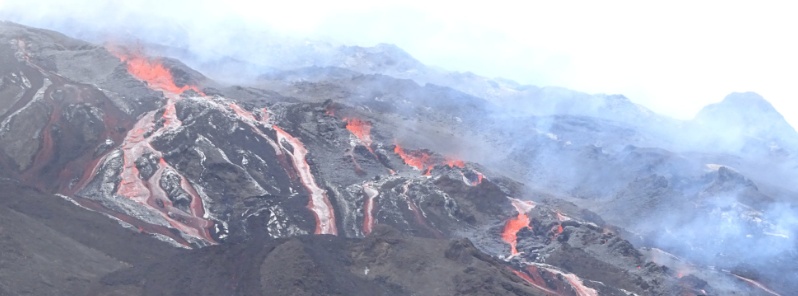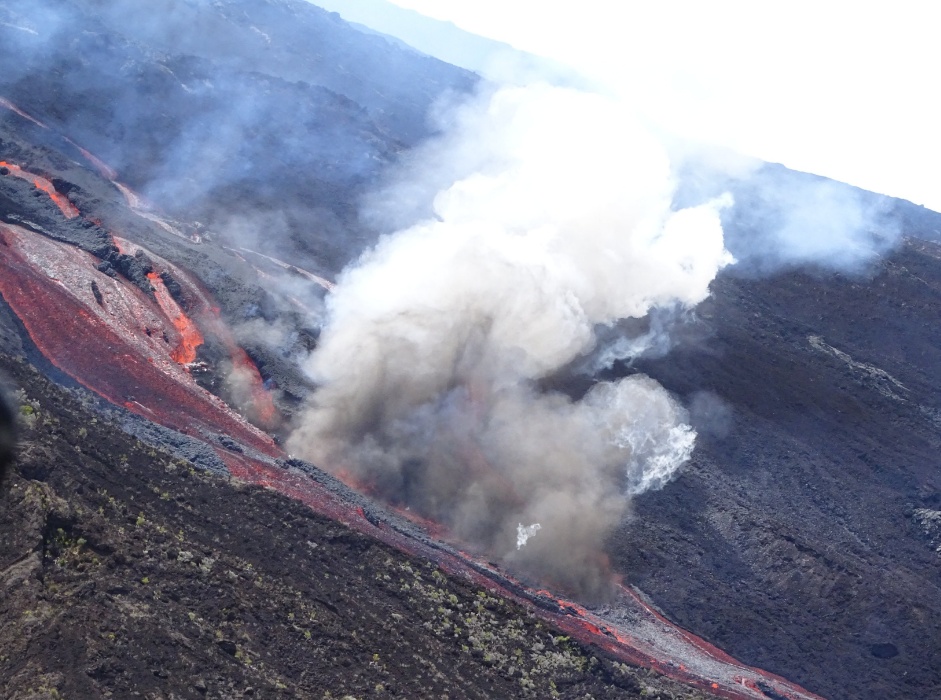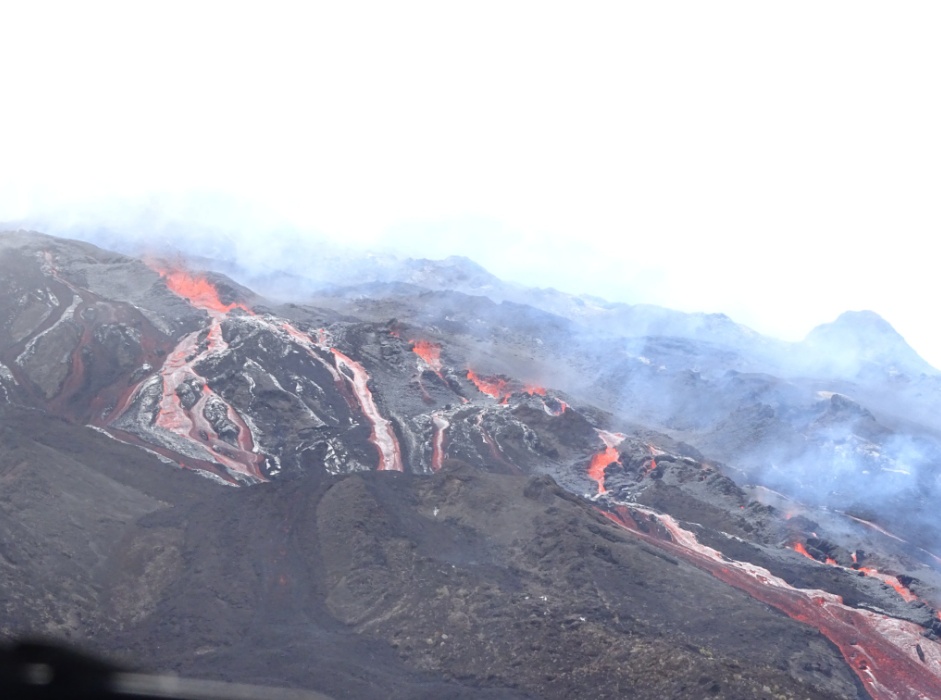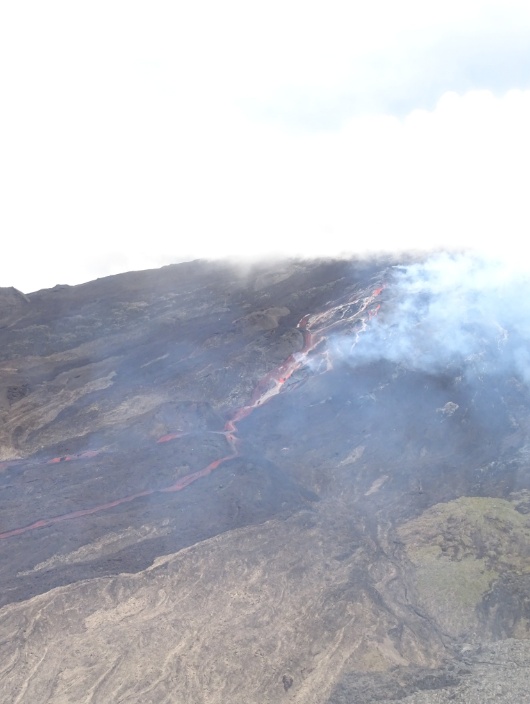New eruption at Piton de la Fournaise volcano, Reunion

A new eruption has started at Reunion's Piton de la Fournaise volcano at 06:40 UTC on February 10, 2020. The last eruption of this volcano took place in October 2019.
First signs of awakening were detected at 06:27 UTC today with the start of the strong seismic crisis. Before the weather became cloudy, the eruption was visible from the National Road RN2 at the level of the Grand Brule.
The eruptive mouth is at about 2 km (1.2 miles) above sea level on the eastern flank of the volcano.



Images courtesy OVPF
Public access to the Enclos Fouqué, from the Pas de Bellecombe path or from any other path, as well as the landing of aircraft in the volcano area, are prohibited by the prefect. Pas de Bellecombe is a mountain pass and vista point overlooking Enclos Fouqué, the last caldera formed by Piton de la Fournaise.
Geological summary
The massive Piton de la Fournaise basaltic shield volcano on the French island of Réunion in the western Indian Ocean is one of the world's most active volcanoes. Much of its more than 530 000-year history overlapped with eruptions of the deeply dissected Piton des Neiges shield volcano to the NW.
Three calderas formed at about 250 000, 65 000, and less than 5 000 years ago by progressive eastward slumping of the volcano. Numerous pyroclastic cones dot the floor of the calderas and their outer flanks.
Most historical eruptions have originated from the summit and flanks of Dolomieu, a 400-m-high (1 312 feet) lava shield that has grown within the youngest caldera, which is 8 km (26 247 feet) wide and breached to below sea level on the eastern side. More than 150 eruptions, most of which have produced fluid basaltic lava flows, have occurred since the 17th century.
Only six eruptions, in 1708, 1774, 1776, 1800, 1977, and 1986, have originated from fissures on the outer flanks of the caldera. The Piton de la Fournaise Volcano Observatory, one of several operated by the Institut de Physique du Globe de Paris (IPGP), monitors this very active volcano. (GVP)
Featured image credit: OVPF

Commenting rules and guidelines
We value the thoughts and opinions of our readers and welcome healthy discussions on our website. In order to maintain a respectful and positive community, we ask that all commenters follow these rules.